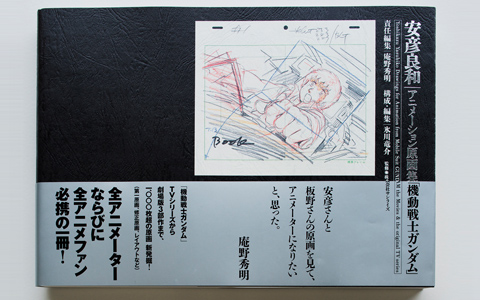The Unknown That Resides Where There is Group Creation
That’s What Moves People
Hikawa says anime is something people make in a group. That unlike manga and novels, where creation and production are one, it has a characteristic of being shaped from the connection between the members of the staff.
“At the point where key frames are traced into animation, the taste of the lines will fade. As this relationship plainly shows, in order to make animation into a product, there are parts where you destroy the creation. Eva has accepted that, as it is redoing some kind of cycle, repeating the scrap & build process again. What to leave and what to destroy? This decision is actually a very organic task. When you advance in a large group, there probably comes a moment when suddenly a soul resides in the work. You could say it’s a miraculous phenomenon. In such a way, something descends to the place where a group of people are making something. So I thought, maybe that’s what moves people. I’m a man of science, so I don’t really like shamanism and the occult, but in the end, it comes down to that.”
Hikawa was always looking for the reason why animation captures his heart so much.
“Along with working on Eva comes the feeling of getting closer to a secret step by step. There must be a kind of correlation binding the sender and the receiver together that we can’t put into words yet. I felt that the verbalization of such things was neglected too much until now. A good point of anime is that by saying, ‘Did you watch that yesterday? It was really interesting’, various things get across and you share your values. However, there is also a tendency to depend on non-verbal expressions too much and take detailed value judgements such as what part of it is interesting or what aspects are good as tacit knowledge, resulting in the exclusion of people who don’t understand it. Half a century has passed since Astro Boy -- and that 50 years is certainly not a short time.
In the 1960s, movies were already systematized as a culture and accepted as a form of art. In the case of anime, not even this systematization has been accomplished; it’s only a huge amount of consumer articles flowing. If it stays this way, it has no hope of becoming a culture”
And when in 2012 Hikawa saw the premiere of 3.0, an unexpected development, he felt that way again.
“Regarding 3.0, almost everything was strictly confidential. Someone remotely accessed my computer before the release, and I was sitting on pins and needles waiting for the release, worried about what I would do if it leaked from me by any chance (laughs). By the way, even though I read the script and the materials and even did interviews on the tentative video, I felt a very fresh surprise when I watched the complete premiere. 3.0 was a movie that took on Shinji’s viewpoint throughout, and you were continuously surprised together with the protagonist. Now that feeling is what you call a real movie experience. He is blown into an unknown world, experiences happy and terrible things, and comes back. It would’ve been natural for anyone to have “I can’t believe it” on their face after having appreciated the movie, but even I who possessed information tasted the same surprise. Animation offers a unique experience that is only established the moment you watch it. And 3.0 has that. These complete new works with different stories made realize again the importance of such a thing.”
The moment a soul resides in a work at the production site and the kind of primal feeling that is born when the audience accepts that soul.
“Observing and verbalizing such mysterious phenomena as accurately as possible - isn’t that my destiny, too? I started thinking like that as I continued my involvement with Evangelion.”

Evangelion Shin Gekijoban: Ha Zenkiroku Zenshuu (Everything about Evangelion: 3.0), compiled into shocking sized volumes weighing a total of 5.4 kg (!). The long interview with director Anno mentioned in connection with the new movie can only be found in the Zenkiroku Zenshuu series as of present. Hikawa’s staff interview articles on 13 members including the supervising director goes on for a staggering 163 pages. This is a transcendent document collection you should have at your home if you’re an Eva lover.

Yoshikazu Yasuhiko Animation Key Frame Collection: Mobile Suit Gundam, in which Anno participated as an editor and Hikawa as a composer and editor. This key frame collection was published by Kadokawa in 2013, and it compiles Yoshikazu Yasuhiko’s work as an animator wonderfully. Yasuhiko is the character designer and animation director of Mobile Suit Gundam and an animator both Anno and Hikawa loves and respects. It also contains the key frames of Ichiro Itano, whom Anno looks up to as his mentor. By the way, Anno is also the very man who started assertively making similar key frame collections of anime works.

